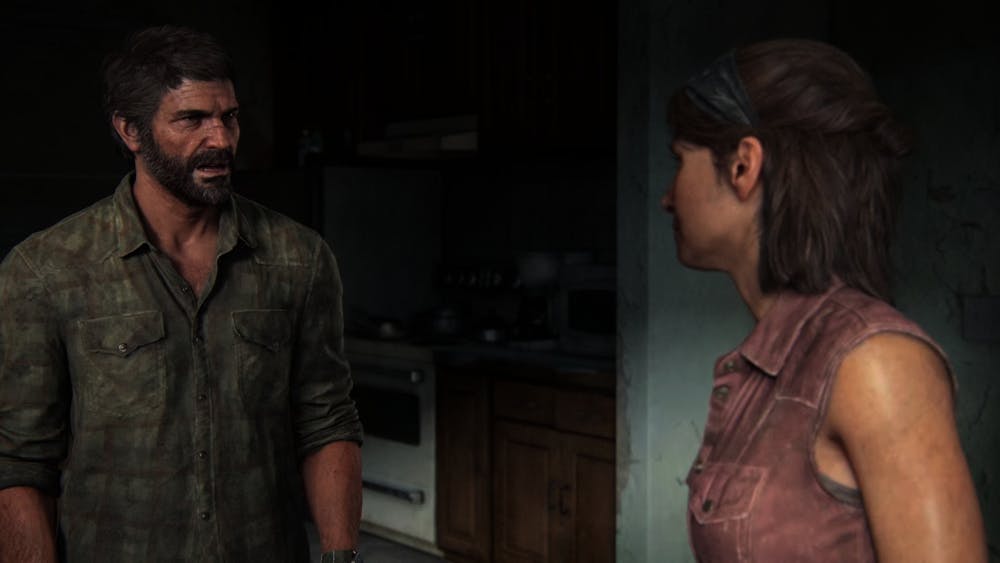In the past two months, The Last of Us franchise has shot back into public conversation. A new HBO show starring Pedro Pascal and Bella Ramsey is in the works, and a ground-up remake of The Last of Us was released in September.
Originally, The Last of Us was released in 2013 — near the end of the Playstation 3’s life cycle. It was an achievement in storytelling and solid in gameplay as well. It was rereleased as a remaster in 2014 and has now been completely remade in 2022.
There’s been some debate as to whether this remake was necessary, though I won’t be focusing on that in this review. Instead, I’ll briefly focus on the remake’s changes and enhancements, though mostly on the bones of the game and whether a remake is worth your time.
As might be expected, the game looks considerably better. Cutscenes, which are an integral part of the narrative of The Last of Us, have received a significant upgrade. Facial animations have been adjusted to better reflect the performances of the voice actors recorded in 2013. The emotions at the heart of the game have an added sense of realism and heart. Combined with better lighting and environments, these cutscenes look almost lifelike, though Naughty Dog — the developer of the game — has stylized character models subtly to avoid the uncanny valley effect.
The line between cutscenes and gameplay is almost nonexistent. While some environments shown in gameplay may not be as high fidelity as cutscene environments, and some character models of NPCs might not be as detailed as those of main NPCs, lighting and character models appear to be identical in both gameplay and cutscenes. In the original, cutscenes were pre-rendered. This is a huge step for the game and emblematic of graphical progress in video games.
I’m not a fan of some changes or lack thereof. The visual design of some environments — especially underground ones — have been changed and often change the meaning and tone of the scene. Some unchanged gameplay makes the game feel dated, though that makes sense. I appreciate the effort to keep the feel of the game intact.
The game’s combat, while unchanged, feels great. Every melee attack you land feels weighty and brutal, amplified by improved gore effects across the board. Ranged weapons are much harder to aim than in traditional shooters. The main character, Joel, doesn’t aim steadily by default, just like none of us would be able to. This makes every shot that actually hits its mark feel earned — or maybe even lucky.
But throughout the game, you can find ways to make aiming significantly easier. Often between combat encounters you’ll be able to scrounge for equipment, including pills, which upgrade aiming stability and Joel’s other abilities. Other upgrades include crafting throwable weapons and health kits faster, using health kits faster and upgrading maximum health. Joel can also find weapon parts, which can be used to upgrade ranged weapons and make them do more damage per hit, reload faster and have a wider range, among other capabilities.
Other things found in the environment can be used to craft items, though ammo is often hard to find. This makes combat encounters feel much more tense, as you don’t want to waste valuable resources. You need to make every shot count.
Most of the game doesn’t involve direct combat, though. Large groups of enemies will usually overwhelm you, so the best strategy is to either take everyone out quietly or to thin out the crowd, then go in loud. This strategy is consistently tense and thoroughly enjoyable. For the best experience with this style of combat, play on grounded difficulty.
Between various combat encounters are traversal segments, which involve moving ladders, dumpsters and planks to get to a destination. It’s pretty tedious, though it allows story and combat moments to breathe. However, the placement of various traversal objects in conspicuous places makes these segments feel less organic, taking me out of the game somewhat.
The narrative of the game deserves every bit of praise given to it. The story is tight and somewhat easy to follow, but is incredibly impactful. It follows two main characters, Joel and Ellie, as they travel across the country in a post-apocalyptic world to save humanity. That’s an extra-simplified version of the plot — there’s plenty of caveats and events that happen along the way, none of which I will talk about here.
Aiding the narrative are various elements of environmental storytelling. Notes scattered across the torn landscape provide insight into the lives of those who came before you. The world itself often contains hints of what happened — maybe an abandoned college dorm, a stakeout on top of a semi truck or a skeleton with a shotgun in its hand slumped against a wall. It all makes the world feel real and lived in.
The Last of Us is as great as it’s ever been. Visual improvements in this thoughtfully constructed remake allow the game to endure for even longer and appeal to a broader audience — save some interesting choices in regard to art style and untouched gameplay. Its combat remains tense, interesting and fun, and the narrative is a masterclass in video game storytelling.
Final Score: 9/10


